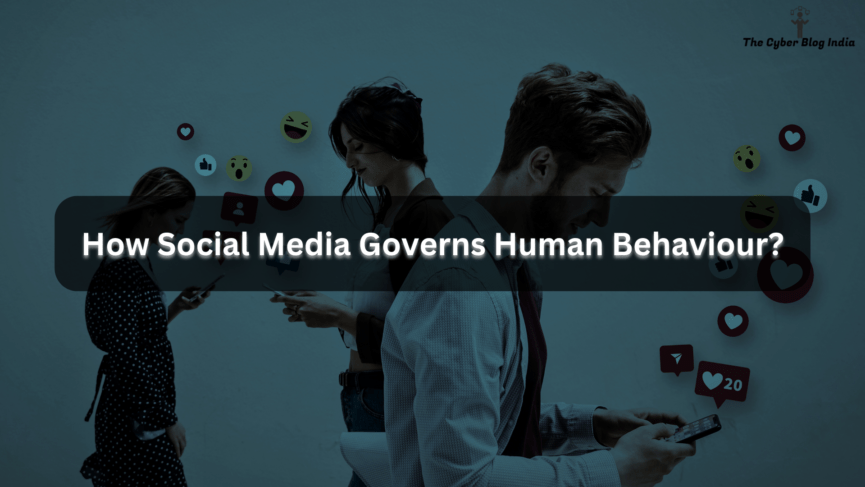How Social Media Governs Human Behaviour?

Human beings make decisions in the most humane ways. Several psychological, social and personal elements underpin our decisions. More often than not, these decisions may not align with rationality or logic. Take, for example, the following of social media “trends”. Usually, trends on the Internet develop and unfurl in a fashion that isn’t all that rational. One such trend was the #IceBucketChallenge. This trend gained traction in 2014 and saw people pouring a bucket of ice water over their heads. The objective behind this trend was to promote awareness around and increase donations towards research on amyotrophic lateral sclerosis (ALS).
Behavioural Decision Theory (BDT)
The #IceBucketChallenge trend took the Internet by storm. Renowned celebrities, leading businessmen and world leaders participated and nominated others. When we employ the Behavioural Decision Theory (BDT) to study the trend, it occurs that the challenge isn’t embedded in rationality. For one, the activity of pouring ice water over oneself has seemingly no relation to the cause it was promoting. For another, the participants overlooked significant health and environmental risks that could be prompted by the challenge. Such behaviour points to the concept of Bounded Rationality.
Bounded Rationality and Heuristics
Bounded rationality suggests that decision-making cannot be absolutely rational. This is due to limited knowledge, cognitive capacity, and time. As a result, individuals make decisions that satisfice them. The term, coined by scientist Herbert Simon, refers to a decision that is good enough, though it may not be an optimal one.
Bounded rationality leads us to another concept — heuristics. Heuristics are mental shortcuts that reduce the effort, time and energy needed to make decisions. It can be argued that, in the case of the #IceBucketChallenge, heuristics took command of decision-making. The heuristic of social proof suggests that when more people support a particular behaviour, an individual’s likelihood of engaging in it also increases. Trends on the Internet reflect this. As more people became ready to pour a bucket of ice water on themselves, the idea became acceptable to others. Besides this, the heuristic of association is also crucial. When the challenge became associated with a good cause (ALS) or a reputed person (like Bill Gates participating in the challenge), the probability of people choosing to engage in the challenge increased.
Beyond Trends
Trends are not the only thing that affects our behaviour on social media. The relationship between social media and behavioural decision-making is more intricate and complex.
1. Impulse Buying Behaviour and FOMO
Impulse buying behaviour is another kind of decision-making that social media drives. Several marketing techniques used on social media can trigger cognitive biases in people. Eventually, they end up buying things without forethought. A big one of these biases is FOMO — the fear of missing out. When others have experiences we do not have, a sense of inadequacy can penetrate us for not having similar experiences. FOMO drives sales because it is based on heuristics.
Besides the social proof and association, FOMO also works because of its availability bias. More memorable events, or events that stand out to us can easily be retrieved from our minds. We tend to aggrandise their value and seek them more than we would’ve otherwise. This, combined with ‘loss aversion’— or the fact that humans are more motivated by our desire to prevent a loss than to acquire a gain — and other cognitive biases can make us impulsive actors on the Internet. The impact is unmistakable, especially when over 60% of Americans agree that they regret at least one impulsive purchase due to social media.
2. Body Image Concerns
Body image on social media also conditions our minds. How individuals perceive their bodies is heavily dependent on social media. Many studies have explained the correlation between the two, demonstrating that rising social media use results in body dissatisfaction and unhealthy eating patterns. The bias of social comparison is of consequence here. It argues that we discern our worth in relation to where we stand against others. Behaviourally, the repercussions are disastrous. Studies show that rising media exposure can cause body dissatisfaction, interest in weight loss, and the risk of developing eating disorders (like night-eating syndrome or bulimia nervosa).
Can we regulate this?
The negative implications of social media on people’s behaviour must be mitigated to promote a healthier, more productive use of the platforms. One way of dealing with this is through imposing and implementing regulations on these platforms.
In India, the centre has recently taken steps towards informing consumers about endorsements and advertisements that online celebrities or “influencers” may promote. The Department of Consumer Affairs published these new guidelines requiring influencers to disclose their material interests while advertising a product or service. Countries like Australia, the United States, and the United Kingdom have enforced similar guidelines. Disclosure of sponsored content helps improve transparency. It also allows consumers to make more informed choices about products and services on social media.
Regarding body image on social media, France is at the forefront of fighting unattainable beauty standards set through social media. In 2017, the country passed a law that required any photograph that had been retouched to make the model look thinner or thicker to be labelled as so. In 2023, a bill was proposed to ban cosmetic surgery promotion on social media. It will also mandate images with beauty filters to be labelled accordingly. Besides this, country-specific regulations on cyber bullying, hate speech, misinformation, online safety, etcetera have also been mechanisms to abate the ill effects of the Internet on our behaviour.
Featured Image Credits: Image by Freepik
